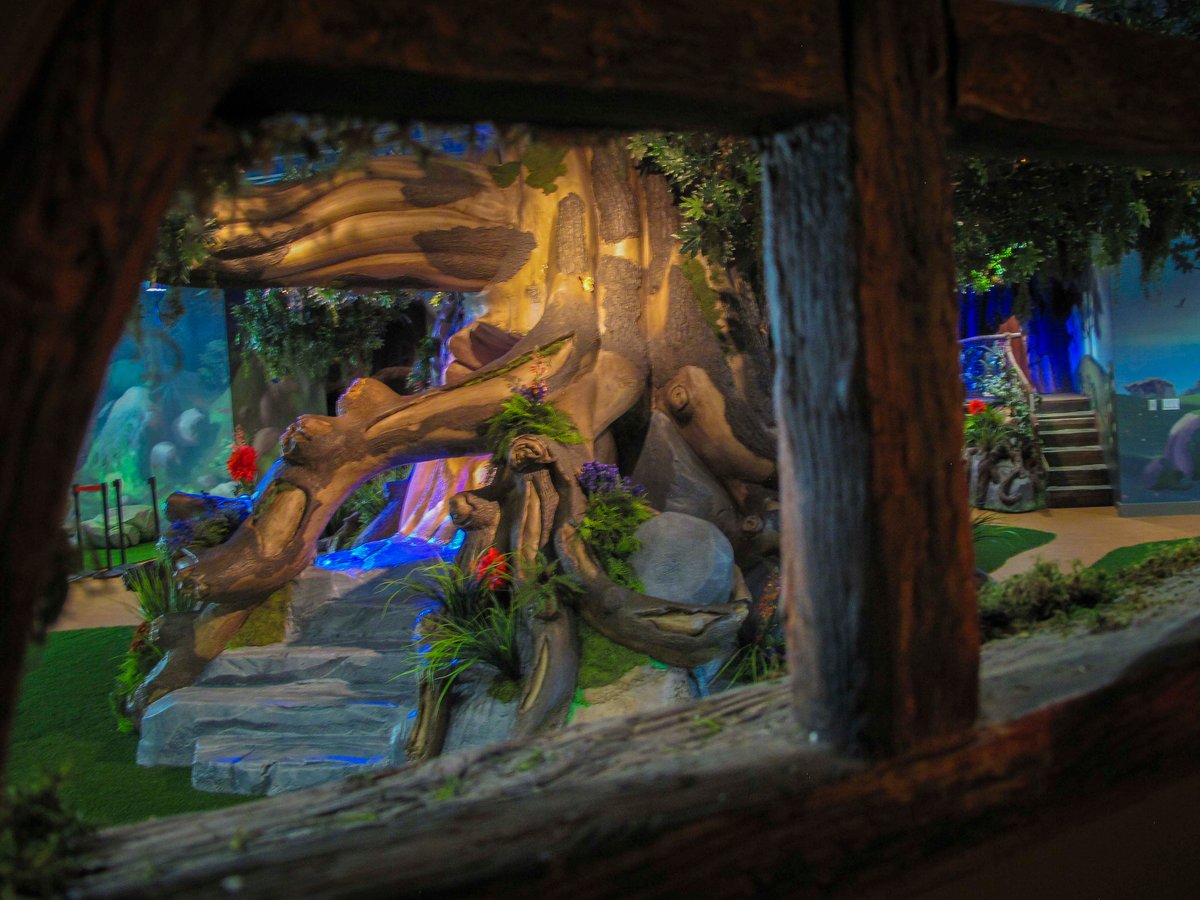ABCs of Theming
L is for Luminous Layers: Where Imagination Meets Illumination
June 2, 2025
Picture this: A hallway mural of a starry night sky. It’s painted beautifully, with swirls of deep blue and tiny white stars scattered across the wall. Now imagine that same mural softly underlit from below—each “star” gently glowing, the edges of the mural fading into a dreamy haze. That’s the power of luminous layers.
In themed design, lighting isn’t just practical—it’s powerful. It changes the way a space feels, how it functions, and how kids (and grown-ups too!) connect with the story unfolding around them.
Lighting isn’t just about seeing where to go. It’s about feeling something when you get there.
-
 Translucent window film utilizes natural outside lighting to make these stars truly glow.
Translucent window film utilizes natural outside lighting to make these stars truly glow.
Layering Light Like a Pro
When it comes to lighting in themed environments, one bulb just won’t cut it. A single overhead fixture might check the box for brightness, but it won’t do much to create depth, warmth, or wonder.
That’s where layered lighting comes in. Think of it like building a sandwich: each layer brings its own flavor, and together they make something truly satisfying.
Here are the three core layers in a well-lit themed space:
1) General LightingThis is your base layer—the everyday stuff. Ceiling lights, recessed fixtures, and anything that makes the space usable and safe.
-
.jpg?width=1200&length=1200&name=Kid%20City%20Building%20%2012-08-15%20Eric%20S%20Reed%20(14).jpg) The large ceiling lights illuminate the space, but note the smaller accent lights that make the mural "pop" behind the stage.
The large ceiling lights illuminate the space, but note the smaller accent lights that make the mural "pop" behind the stage.
Next up: the spotlight moments. Accent lighting calls attention to important elements like check-in desks, safety signage, focal murals, or key 3D props. It helps guide the eye (and often, the feet) to where they need to go.
It doesn’t shout—but it does whisper, “There’s something special here.”
Why Luminous Layers Matter
In kids’ spaces, attention spans can bounce around like popcorn. But lighting helps focus the energy, guide curiosity, and shape the emotional tone of a room.
Here’s how layered lighting supports stronger themed design:
- Creates Depth – Overhead lighting can flatten a space. Strategic uplighting, backlighting, and side glows create shadows and contrast that make even flat surfaces feel dynamic.
- Sets the Mood – Cool-toned light can make a room feel calm and serene. Warm tones bring energy and excitement. Colored lighting, when used wisely, can even enhance storytelling (hello, underwater blues and fiery cave reds!).
- Directs Attention – Want visitors to notice that safety sign, welcome station, or the doorway to the next room? Light it up. People naturally follow light like moths to a porch lamp.
- Ignites Imagination – Glowing props, underlit murals, or twinkling ceiling lights can help blur the line between reality and make-believe. And for little ones, that’s where the fun begins.
A Few Bright Ideas
✨ Add underlighting to a stage platform to make it feel like it’s floating.
✨ Hide LED strips behind cloud cutouts to mimic a backlit sky.
✨ Use light boxes behind stained glass murals or faux windows for a sense of natural light.
✨ Incorporate RGB lighting to shift colors throughout the day for added atmosphere.
Even simple spaces can feel layered and alive with a little creativity and planning.
Planning Tip: Don't Wait 'Til the End
Lighting works best when it’s part of the conversation early on. Retrofitting it later often costs more and creates design limitations. But if it’s baked into the plan from the start, it can be surprisingly affordable—even ambient backlighting, which many teams assume is a luxury.
It’s not about fancy tricks or budget-blowing features. It’s about making sure every part of the environment tells the same story—even the light.
Bright Ideas, Big Impact
So the next time you're dreaming up a whimsical forest, a Bible-time marketplace, or a playful community rec center, don’t just think about what folks will see.
Think about how they’ll see it.
Because in themed environments, light isn’t just illumination—it’s imagination.



